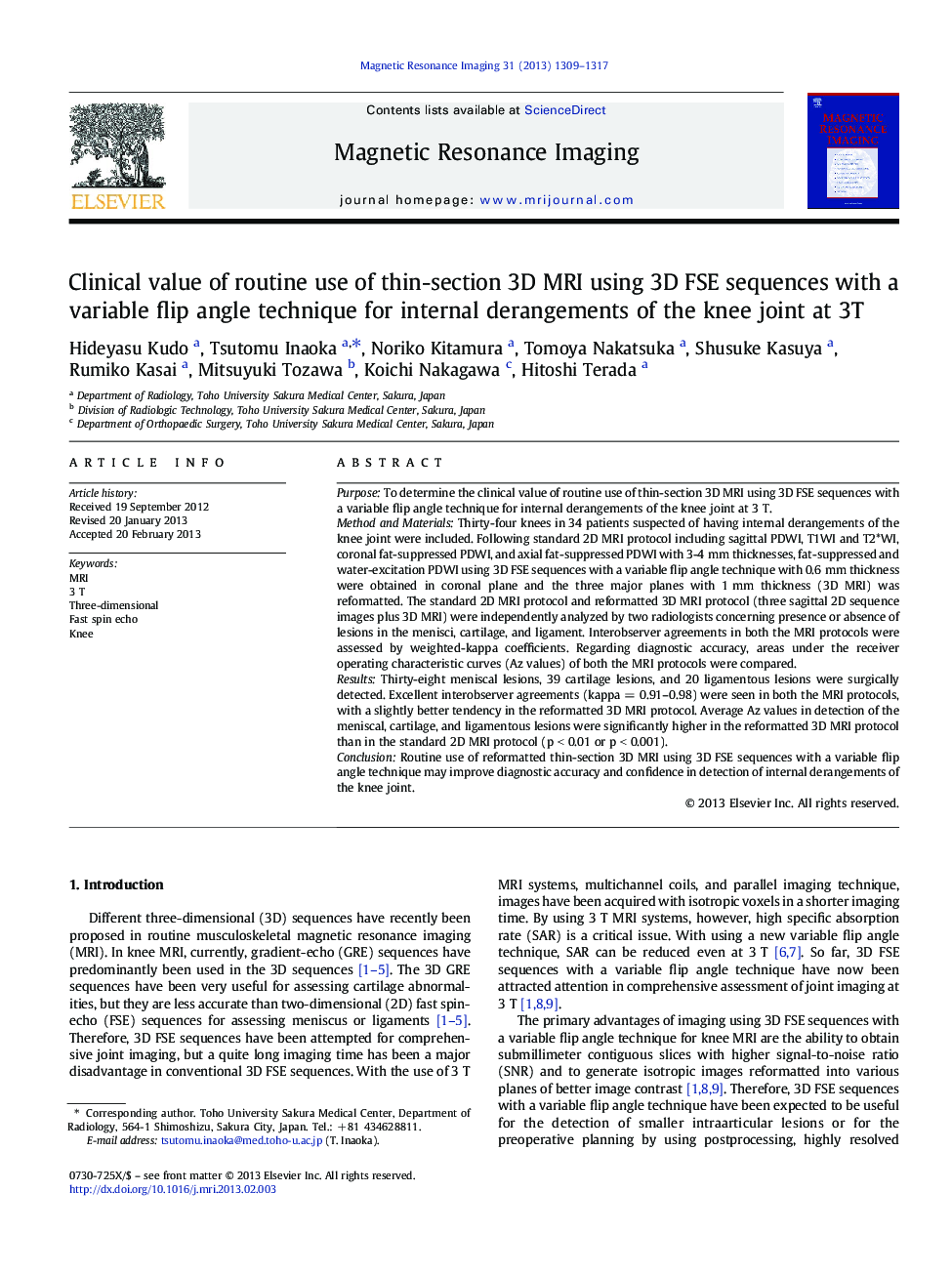| کد مقاله | کد نشریه | سال انتشار | مقاله انگلیسی | نسخه تمام متن |
|---|---|---|---|---|
| 1806368 | 1025203 | 2013 | 9 صفحه PDF | دانلود رایگان |

PurposeTo determine the clinical value of routine use of thin-section 3D MRI using 3D FSE sequences with a variable flip angle technique for internal derangements of the knee joint at 3 T.Method and MaterialsThirty-four knees in 34 patients suspected of having internal derangements of the knee joint were included. Following standard 2D MRI protocol including sagittal PDWI, T1WI and T2*WI, coronal fat-suppressed PDWI, and axial fat-suppressed PDWI with 3-4 mm thicknesses, fat-suppressed and water-excitation PDWI using 3D FSE sequences with a variable flip angle technique with 0.6 mm thickness were obtained in coronal plane and the three major planes with 1 mm thickness (3D MRI) was reformatted. The standard 2D MRI protocol and reformatted 3D MRI protocol (three sagittal 2D sequence images plus 3D MRI) were independently analyzed by two radiologists concerning presence or absence of lesions in the menisci, cartilage, and ligament. Interobserver agreements in both the MRI protocols were assessed by weighted-kappa coefficients. Regarding diagnostic accuracy, areas under the receiver operating characteristic curves (Az values) of both the MRI protocols were compared.ResultsThirty-eight meniscal lesions, 39 cartilage lesions, and 20 ligamentous lesions were surgically detected. Excellent interobserver agreements (kappa = 0.91–0.98) were seen in both the MRI protocols, with a slightly better tendency in the reformatted 3D MRI protocol. Average Az values in detection of the meniscal, cartilage, and ligamentous lesions were significantly higher in the reformatted 3D MRI protocol than in the standard 2D MRI protocol (p < 0.01 or p < 0.001).ConclusionRoutine use of reformatted thin-section 3D MRI using 3D FSE sequences with a variable flip angle technique may improve diagnostic accuracy and confidence in detection of internal derangements of the knee joint.
Journal: Magnetic Resonance Imaging - Volume 31, Issue 8, October 2013, Pages 1309–1317